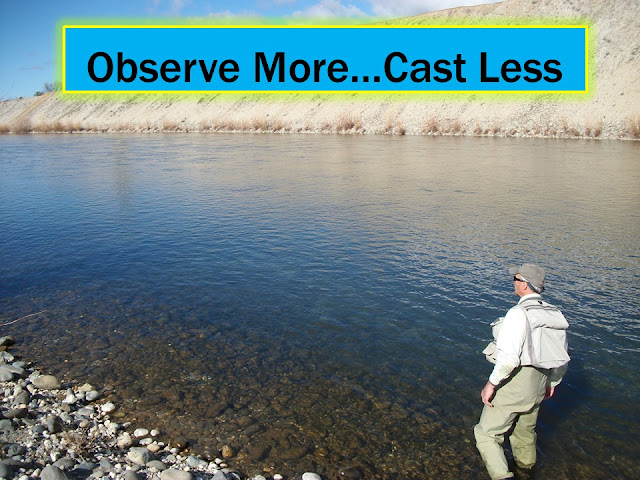There is common misconception when it comes to fishing the Skwala stonefly adult on the Lower Yuba River. Many anglers think it's just a matter of throwing out this big dry fly and like magic, a native Yuba Rainbow will blow up on it. That's really not the case at all. Sure, there are times that happens, but most often it takes a lot of skill and a serious approach to be successful. Below are 6 keys that will help you understand what your up against, and the solutions for each particular problem you will face while on the river.
This lesson was taught to me by my mentor Jimmy (pictured here) many decades ago. By observing more and casting less, you're further in tune with your surroundings. "Keep your head on a swivel" is a saying I like to share with my guests, it pays to look around and take notice of rising fish, Skwalas in the foam lines drifting, and anything out of the ordinary. Too many anglers will pound the same water with cast after cast, over and over. Rest the fish...Let them eat a few naturals...Observe...Then make a calculated presentation.
Fly anglers need to realize that they are fishing for an elusive wild animal that is on high alert, and very scared when in shallow water next to the bank. Stealth is an absolute must, sometimes it's hands and knees to keep an even lower profile. Although, fishing rougher water, or water that has a ripple to it, will actually mask your presence more and also hide your flaws in your presentation. Remember, you're not just fishing...You are hunting. Make a plan, be confident in your approach, and execute it with precision.
In the sequence above, I'm fishing near to far at Separator Rock. There are no rising fish and I'm simply covering water and searching for the most opportunistic feeder. First I cover the section on the left with an incoming foam line and current. I'll make 4 to 6 casts then move on to the middle section, an idle patch of foam. Then, I concentrate my efforts on the right side, where a back eddy current has a foam line coming upstream and right at me. After those smaller sections are dissected, I then fish the large area of the incoming riffle, and the transition zone of shallow to deeper water.
This is the most effective presentation when fishing off the bank on the Yuba. In doing so, you're presenting your fly first, and the fish will be more receptive in taking your offering as the fly enters its cone of vision first. There is no fly line or leader that will be seen by the fish - Just the fly. Skwala stoners do not bounce around the water, or flap their wings like a Golden stone does, nope, they simply drift placidly with the currents. That's why a drag free drift is so important. The bump feed is hard to master, and this is where a good instructional guide can really help you elevate your game to the next level.
You've all heard the saying by now, "Foam is Home", and every bit of it is true. Foam patches from back eddies pictured above actually trap floating adult aquatic insects. Trout love these foam patches as they offer superior cover and protection from predators, and also a reliable source of food. I will often watch these foam patches for a good 10 minutes as sometimes you'll see a nose of a trout poke up and consume an adult Skwala stone. Adjust your position to maximize your efforts, and make that first cast count.
The biggest mistake I see anglers make is that they fish the same piece of water for far too long. That's fine if you've got a single fish rising, or a pod of them, but the more you move, the more success you will have in reaching higher numbers of fish to the net. Above I'm in the "Searching" mode, and working upstream quickly, yet also being observant of every detail that surrounds me. If I do encounter a rising fish upstream of me, I'll make a plan of relocating upstream of the fish carefully without spooking it, then making a downstream bump feed presentation to my quarry...Fly first.
These are just some tips that will surely help you when stalking trout off the bank not only on the Yuba River, but all rivers, streams, and even creeks.
See you on the water...








No comments:
Post a Comment